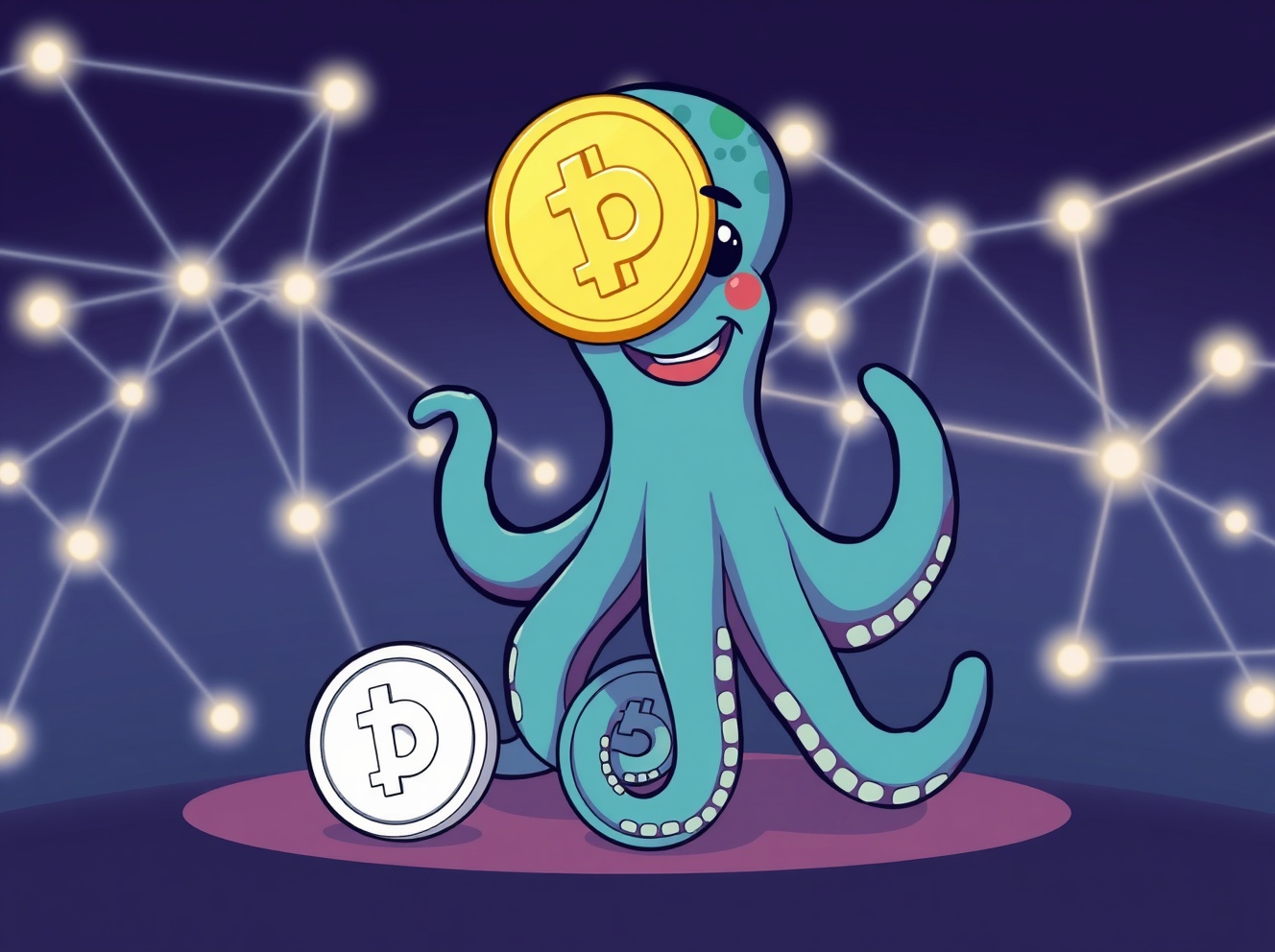Polkadot pUSD: Unlocking a New Era of Decentralized Stability
BitcoinWorld
Polkadot pUSD: Unlocking a New Era of Decentralized Stability
The Polkadot ecosystem is buzzing with a groundbreaking proposal: the introduction of a native stablecoin, Polkadot pUSD. This significant development aims to redefine how stability is maintained within the network, potentially shifting away from its current reliance on external stablecoins like USDT and USDC. For anyone invested in the future of decentralized finance, understanding this strategic move is crucial.
Why is Polkadot Proposing a Native Polkadot pUSD Stablecoin?
Currently, the Polkadot network largely depends on established stablecoins such as USDT and USDC for its decentralized finance (DeFi) activities. While these have served their purpose, the desire for greater autonomy and control over the ecosystem’s financial infrastructure has grown. The proposed Polkadot pUSD seeks to address this by offering a truly native solution.
Previously, an attempt to introduce a stablecoin called aUSD, based on the Honzon protocol, faced challenges and was ultimately unsuccessful. This experience highlighted the need for a robust, well-integrated solution that aligns with Polkadot’s unique architecture. A native stablecoin would mitigate risks associated with relying on centralized issuers and external regulatory pressures, offering more resilience to the ecosystem.
How Will Polkadot pUSD Enhance Ecosystem Stability?
The architecture behind Polkadot pUSD is designed to foster robust stability. Unlike some algorithmic stablecoins, pUSD is proposed to be over-collateralized by DOT, Polkadot’s native token. This mechanism aims to provide a strong backing, mitigating volatility risks and ensuring a more secure asset for transactions and DeFi protocols within the network.
Over-collateralization means that the value of the DOT held as collateral would exceed the value of the pUSD in circulation. This buffer helps absorb price fluctuations in DOT, offering a layer of security for pUSD holders. Furthermore, integrating pUSD directly into Polkadot’s parachain model could unlock seamless interoperability and liquidity across various connected blockchains.
What Are the Potential Benefits and Challenges for Polkadot pUSD?
Introducing a native stablecoin like Polkadot pUSD brings a host of potential advantages, but it also comes with its own set of challenges that the community must carefully consider.
Potential Benefits:
- Increased Autonomy: Reduces reliance on external, potentially centralized stablecoin issuers.
- Enhanced Capital Efficiency: Keeps value within the Polkadot ecosystem, fostering internal growth.
- Seamless Integration: Designed to work natively with Polkadot’s unique parachain architecture.
- New DeFi Opportunities: Opens doors for innovative lending, borrowing, and trading protocols built around pUSD.
Key Challenges:
- Oracle Reliability: Ensuring accurate and decentralized price feeds for DOT collateral.
- Liquidation Risks: Managing potential liquidations during extreme market downturns to maintain peg.
- Adoption and Liquidity: Gaining widespread acceptance and sufficient liquidity to compete with established stablecoins.
- Governance Hurdles: Securing community consensus through the governance vote process.
The success of this proposal hinges on a robust design and strong community support to navigate these complexities.
What Does the Future Hold for Polkadot’s DeFi Landscape with Polkadot pUSD?
The successful implementation of Polkadot pUSD could profoundly impact the network’s decentralized finance landscape. It represents a strategic step towards greater self-sufficiency and innovation, potentially attracting more developers and users to build on Polkadot. A native stablecoin could act as a foundational block, encouraging the creation of more sophisticated and integrated DeFi applications.
Moreover, a native stablecoin would strengthen Polkadot’s position as a leading multi-chain ecosystem, offering a secure and stable asset that can flow freely between its parachains. This would not only enhance user experience but also solidify Polkadot’s vision of an interconnected, decentralized future.
The proposal for a native Polkadot pUSD stablecoin marks a pivotal moment for the Polkadot ecosystem. It signifies a bold ambition to strengthen its financial independence and enhance the stability offered to its users and developers. As the community deliberates on this crucial governance vote, the outcome will undoubtedly shape the next chapter of Polkadot’s journey in the competitive blockchain space.
Frequently Asked Questions (FAQs)
What is Polkadot pUSD?
Polkadot pUSD is a proposed native stablecoin for the Polkadot ecosystem, intended to be collateralized by Polkadot’s native token, DOT. Its primary goal is to provide a decentralized, stable asset for transactions and DeFi activities within the network.
How is pUSD different from aUSD?
While both aim to be stablecoins within Polkadot, pUSD is a new proposal following the challenges faced by the previous aUSD, which was based on the Honzon protocol. The new pUSD proposal aims for a robust design, likely incorporating lessons learned from prior attempts and focusing on strong DOT collateralization.
Why is Polkadot proposing a native stablecoin?
Polkadot aims to reduce its reliance on external stablecoins like USDT and USDC, which introduce centralization risks and external dependencies. A native stablecoin like pUSD offers greater autonomy, better integration with the ecosystem, and enhanced control over its financial infrastructure.
Who decides if pUSD will be issued?
The issuance of pUSD is subject to a governance vote by the Polkadot community. DOT holders will participate in this decentralized decision-making process, ensuring that the community has a direct say in the network’s future direction.
What are the main risks associated with pUSD?
Key risks include ensuring the reliability of price oracles for DOT collateral, managing potential liquidations during extreme market volatility, and achieving sufficient adoption and liquidity to maintain its peg effectively. Robust design and active community oversight are crucial for mitigating these risks.
Stay informed about the latest developments in the Polkadot ecosystem! If you found this article insightful, please share it with your network on social media to help spread awareness about Polkadot’s exciting new stablecoin proposal.
To learn more about the latest Polkadot trends, explore our article on key developments shaping Polkadot’s future price action.
This post Polkadot pUSD: Unlocking a New Era of Decentralized Stability first appeared on BitcoinWorld.
You May Also Like

ChatGPT Identifies the Next 100x Crypto of 2025, Solana (SOL) and Ripple (XRP) Bulls Already Buying

Ripple, DBS, Franklin Templeton Unveil RLUSD DeFi Integration
